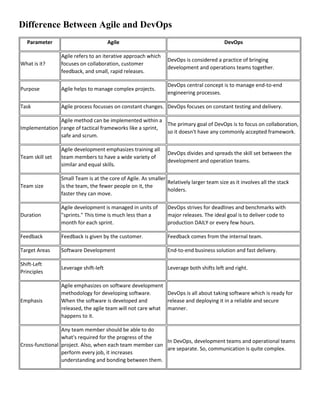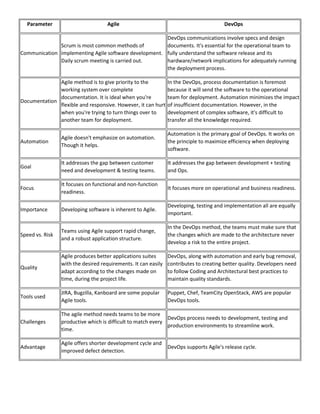Agile methodology involves iterative development and testing. It emphasizes incremental and evolutionary development by breaking projects into smaller pieces that are integrated for testing. Popular Agile frameworks include Scrum, Kanban, Extreme Programming, Crystal, Dynamic Systems Development Method, and Feature-Driven Development. The Agile Manifesto outlines core values and principles of Agile, including prioritizing individual/interactions over processes/tools and customer collaboration over contract negotiation.
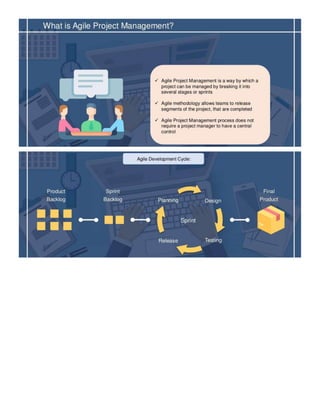
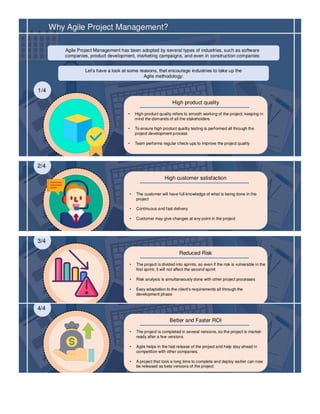




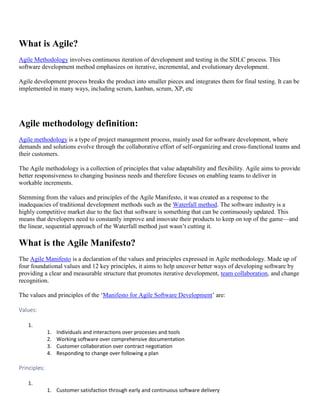
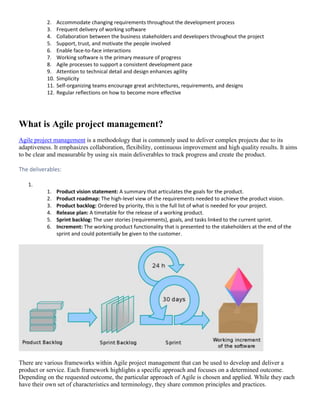
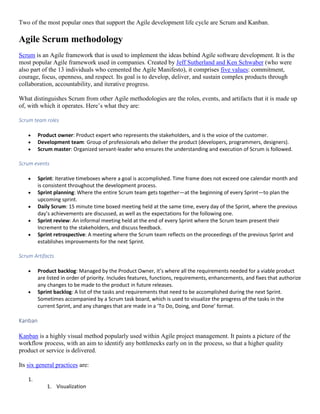
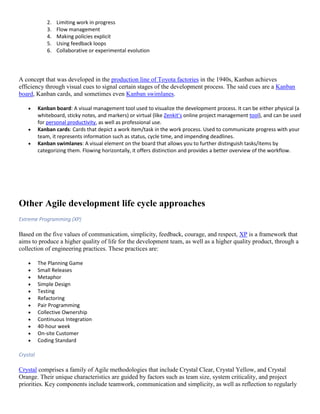
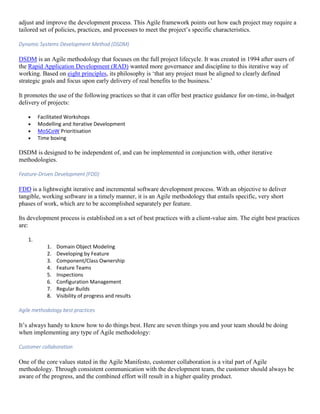
![User Stories
A tool used to explain a software feature from an end-user perspective, the purpose of a User Story is to create a
simplified description of a requirement. It helps to picture the type of user of the product, what they want, and
the reason(s) for it. A common User Story format that is used is:
As a [role], I want [feature], because [reason].
Continuous Integration
Continuous Integration (CI) involves keeping the code up to date by producing a clean build of the system a few
times per day. With a rule stating that programmers never leave anything unintegrated at the end of the day, it
enables the delivery of a product version suitable for release at any moment. What CI seeks to do is to minimize
the time and effort required by each integration.
Automated tests
Performing automated tests keeps the team informed about which of the code changes are acceptable, and
whether or not a functionality is working as planned. Regression tests are run automatically before work starts.
Pair programming
Programming in pairs aims to enhance better designs, less bugs, and a sharing of knowledge across the
development team. One of the least-embraced Agile programmer practices, it involves one programmer
‘driving’ (operating the keyboard), while the other ‘navigates’ (watches, learns, provides feedback). The roles
can be rotated.
Test-driven development (TDD)
TDD aims to foster simple designs and inspire confidence. Instead of a process where software is added that is
not proven to meet requirements, it is a method based on the repetition of a very short development cycle where
requirements are turned into test cases, and then the software is improved to pass the new tests.
Burndown charts
A burndown chart is a graphical representation of the work that is left to do versus the time you have to do it.
Using one as part of your Agile project management plan enables you to forecast when all the work will be
completed. A detailed burndown chart will also include the amount of User Stories per unit of time.
Agile methodology is an effective process for teams looking for a flexible approach to product development. No
longer exclusive to the software industry, it can be implemented to any business venture that requires a non-
linear plan of attack that also needs to value customer collaboration, effective teamwork, responsive changes,
and of course, quality results.](https://image.slidesharecdn.com/agilemethodologyinterview-240227114434-ca2c30c9/85/Agile-methodology-Interview-Question-Document-File-12-320.jpg)
